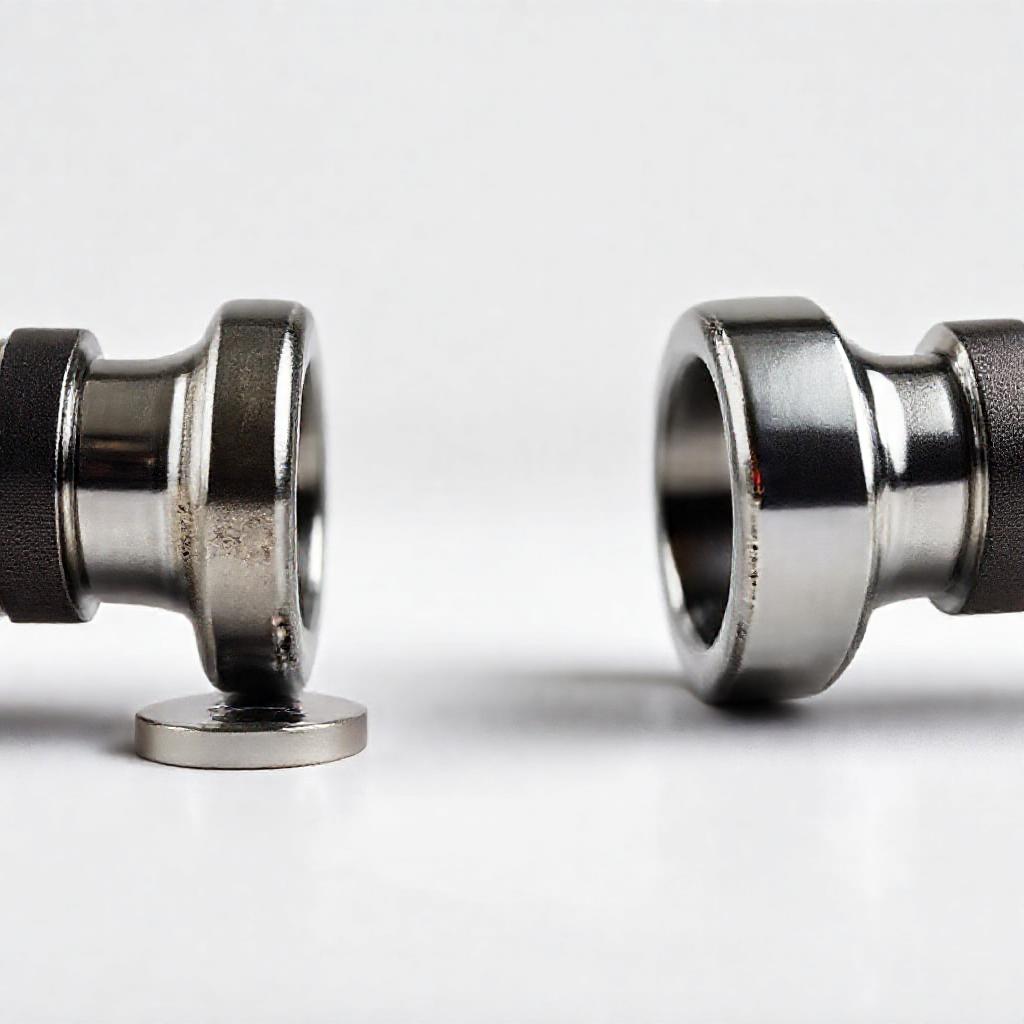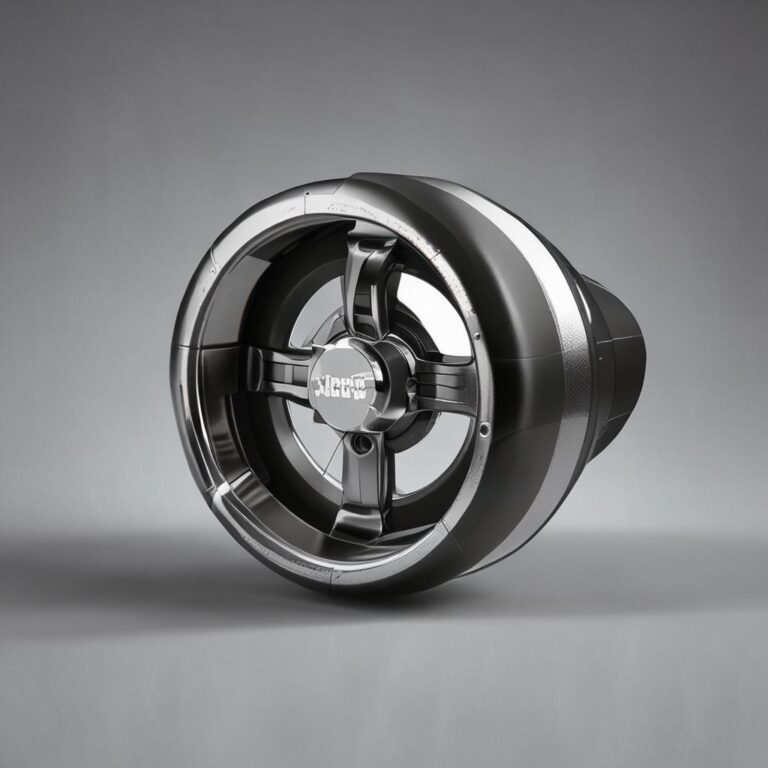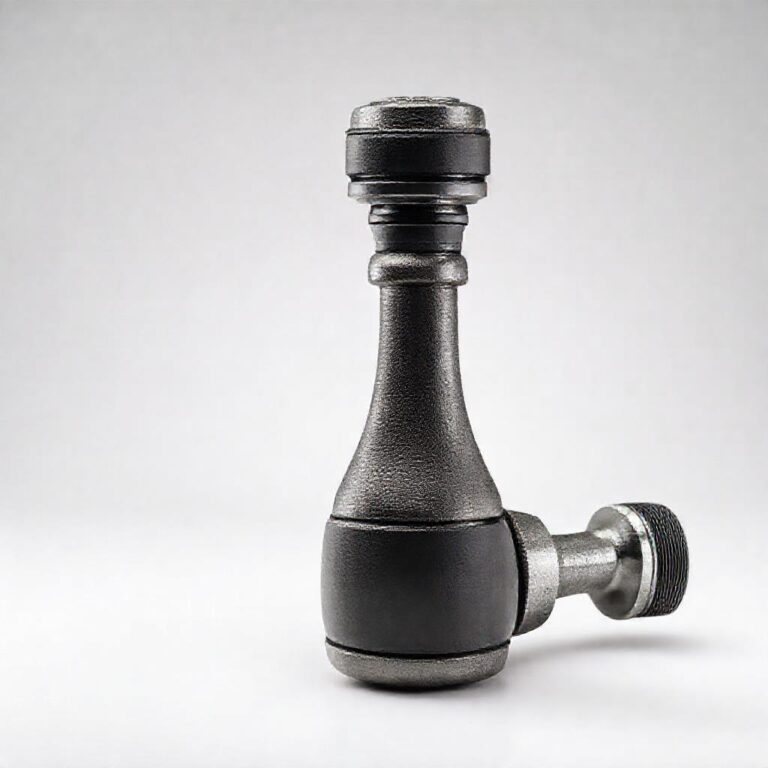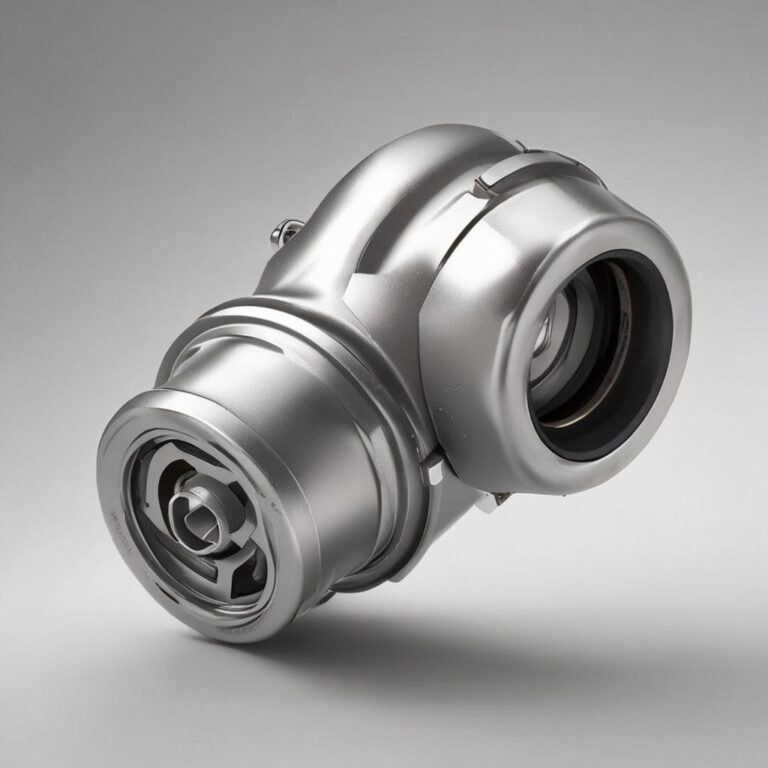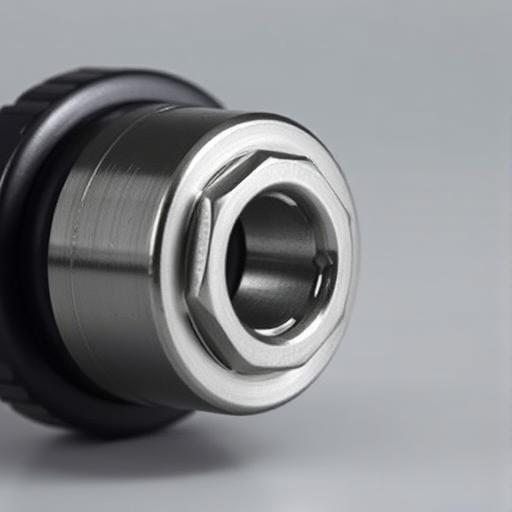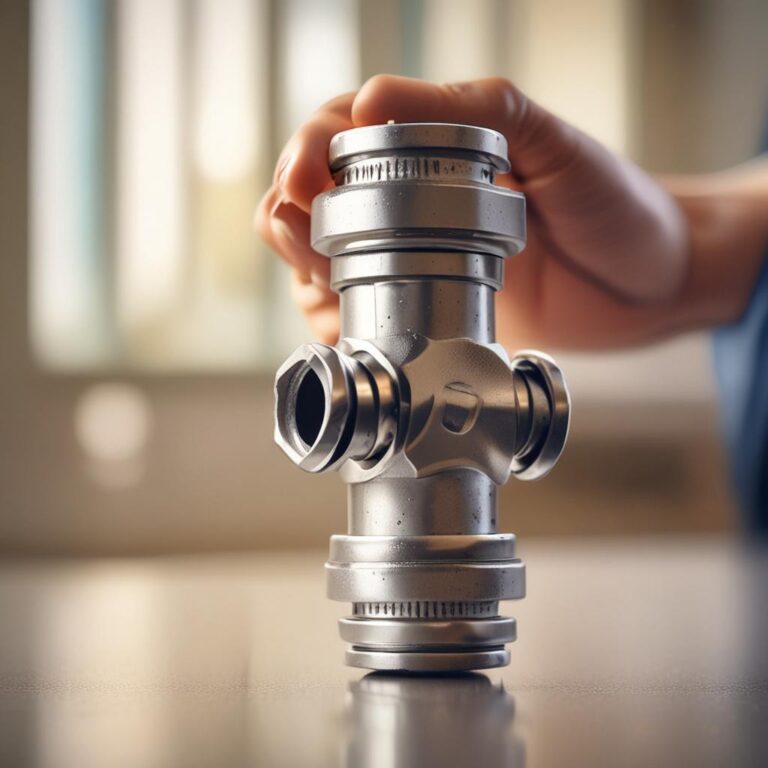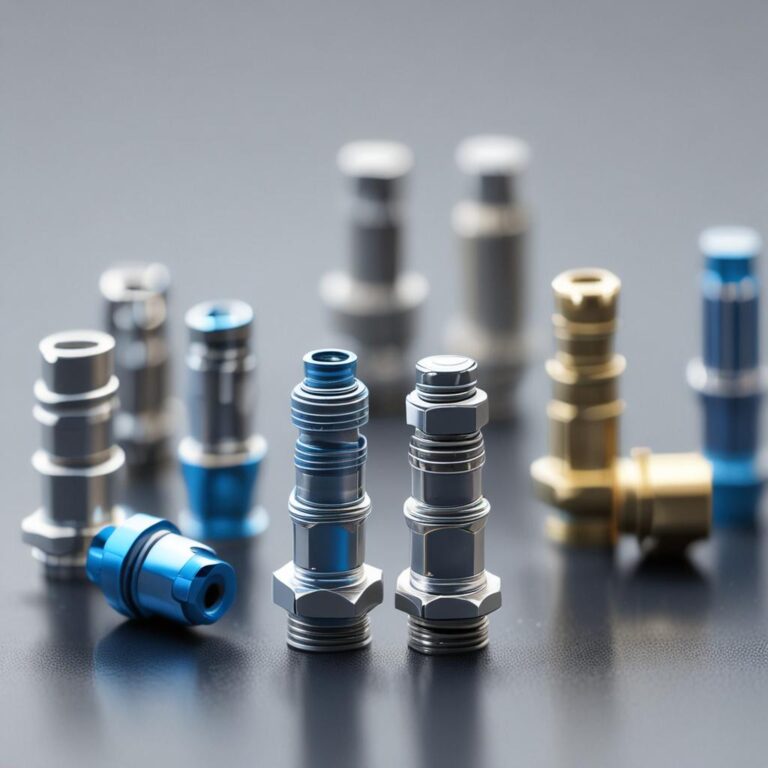Greasable Vs Non-greasable U-joints: Pros and Cons Explained
Universal joints, or U-joints, are critical components in vehicle drivetrains, enabling the transfer of rotational power between shafts at varying angles. Whether you’re driving a daily commuter or a heavy-duty off-road vehicle, the type of U-joint you choose—greasable or non-greasable—can significantly impact performance, maintenance, and longevity. While greasable U-joints offer the flexibility of regular lubrication, non-greasable models provide a low-maintenance alternative with sealed bearings. This guide explores the pros and cons of each type to help you make an informed decision for your vehicle’s needs.
Step-by-Step Process
Identify Application
Determine if the U-joint operates in high-load or high-speed conditions.
Evaluate Maintenance
Assess the frequency and ease of lubrication required for greasable U-joints.
Compare Durability
Compare the lifespan of greasable vs. non-greasable U-joints in your environment.
Check Sealing
Ensure non-greasable U-joints have proper seals to prevent contamination.
Make Selection
Choose based on performance, maintenance, and cost considerations.
Process infographic for Greasable Vs Non-greasable U-joints: Pros and Cons Explained
What Are U-Joints and Why Are They Important?
Definition and Function
U-joints are mechanical couplings that transmit torque between two rotating shafts that are not aligned. They compensate for misalignment by allowing angular movement while maintaining consistent power transfer. These joints are commonly found in driveshafts, steering systems, and industrial machinery, making them essential for smooth operation and efficiency.
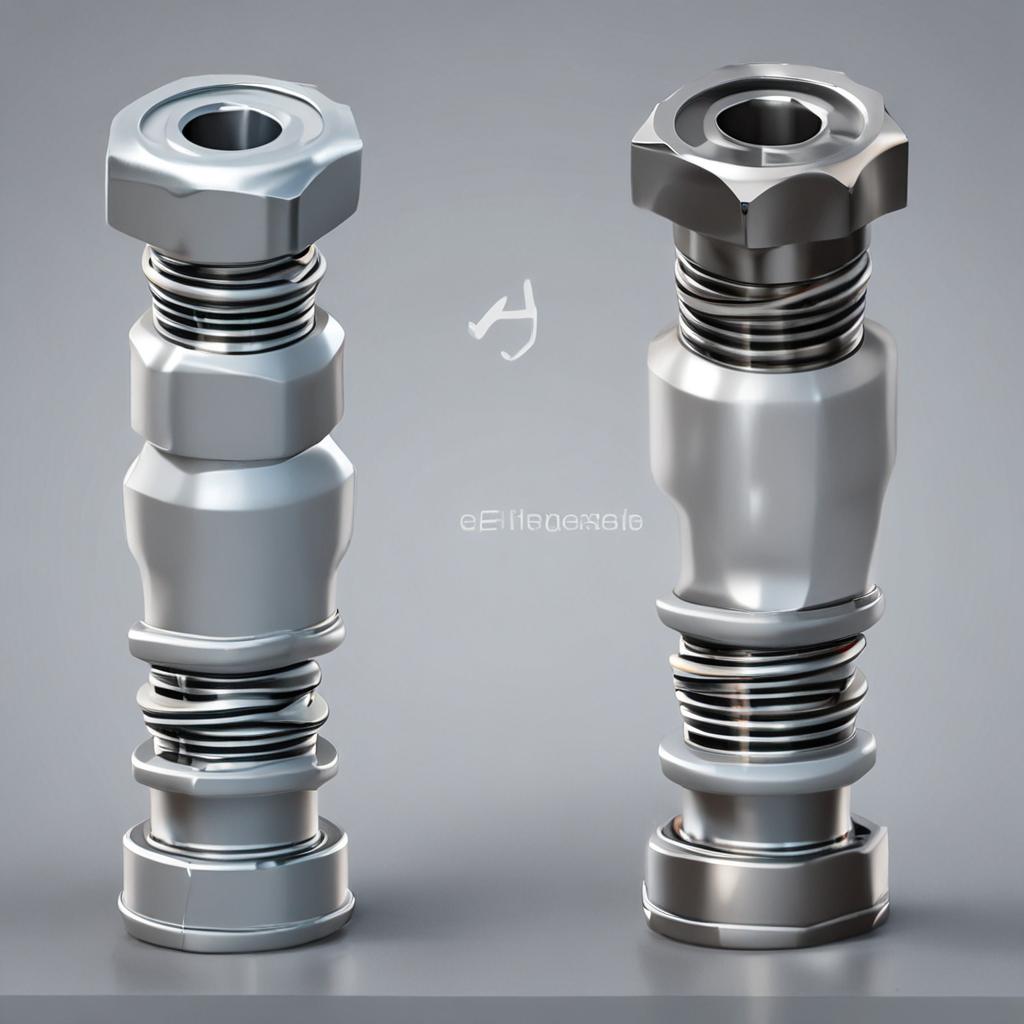
Types of U-Joints
There are two primary types of U-joints: greasable and non-greasable. Greasable U-joints feature grease fittings that allow for periodic lubrication, while non-greasable models come pre-lubricated and sealed, eliminating the need for maintenance. Understanding the differences between these types is crucial for selecting the right U-joint for your vehicle or application.
Greasable U-Joints: Pros and Cons
Pros
- Ease of Maintenance: Regular greasing helps reduce friction and wear, extending the joint’s lifespan.
Cons
- Maintenance Requirements: Greasing must be done regularly, which can be time-consuming.
Non-Greasable U-Joints: Pros and Cons
Pros
- Low Maintenance: No need for regular lubrication, making them ideal for convenience.
Cons
- Limited Lifespan: Once the internal lubrication degrades, the joint must be replaced.
Factors to Consider When Choosing Between Greasable and Non-Greasable U-Joints
Vehicle Usage and Conditions
For off-road or heavy-duty applications, greasable U-joints may be preferable due to their ability to withstand harsh conditions with proper maintenance. However, non-greasable joints offer convenience for daily drivers who prefer minimal upkeep.
Maintenance Preferences
If you’re comfortable performing regular maintenance, greasable U-joints provide long-term benefits. Conversely, non-greasable joints are ideal for those who prioritize ease of use over hands-on care.
Budget and Long-Term Costs
While non-greasable U-joints have a higher upfront cost, they may save money in the long run if you prefer a “set and forget” approach. Greasable joints, though cheaper initially, require ongoing investment in lubrication and maintenance.
Manufacturer Recommendations
Always follow your vehicle manufacturer’s guidelines when selecting a U-joint. Some vehicles are designed to work optimally with one type over the other.
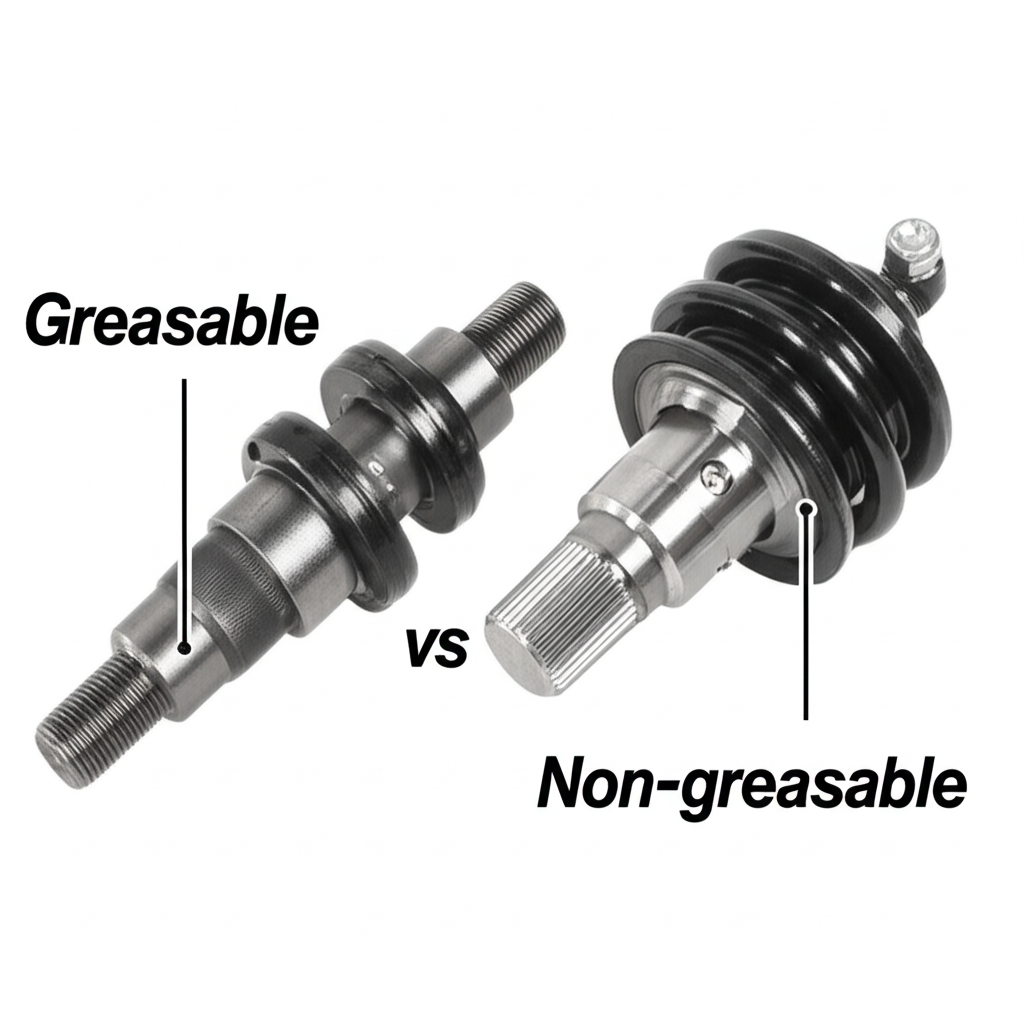
Maintenance Tips for U-Joints
For Greasable U-Joints
Grease your U-joints every 3,000–5,000 miles using a high-quality, high-temperature grease. Ensure the grease fitting is clean before application to prevent contamination. Over-greasing can force old lubricant out, so use just enough to purge the old grease.
For Non-Greasable U-Joints
Inspect these joints periodically for signs of wear, such as excessive play, vibrations, or unusual noises. If you notice any of these symptoms, replace the joint promptly to avoid further damage.
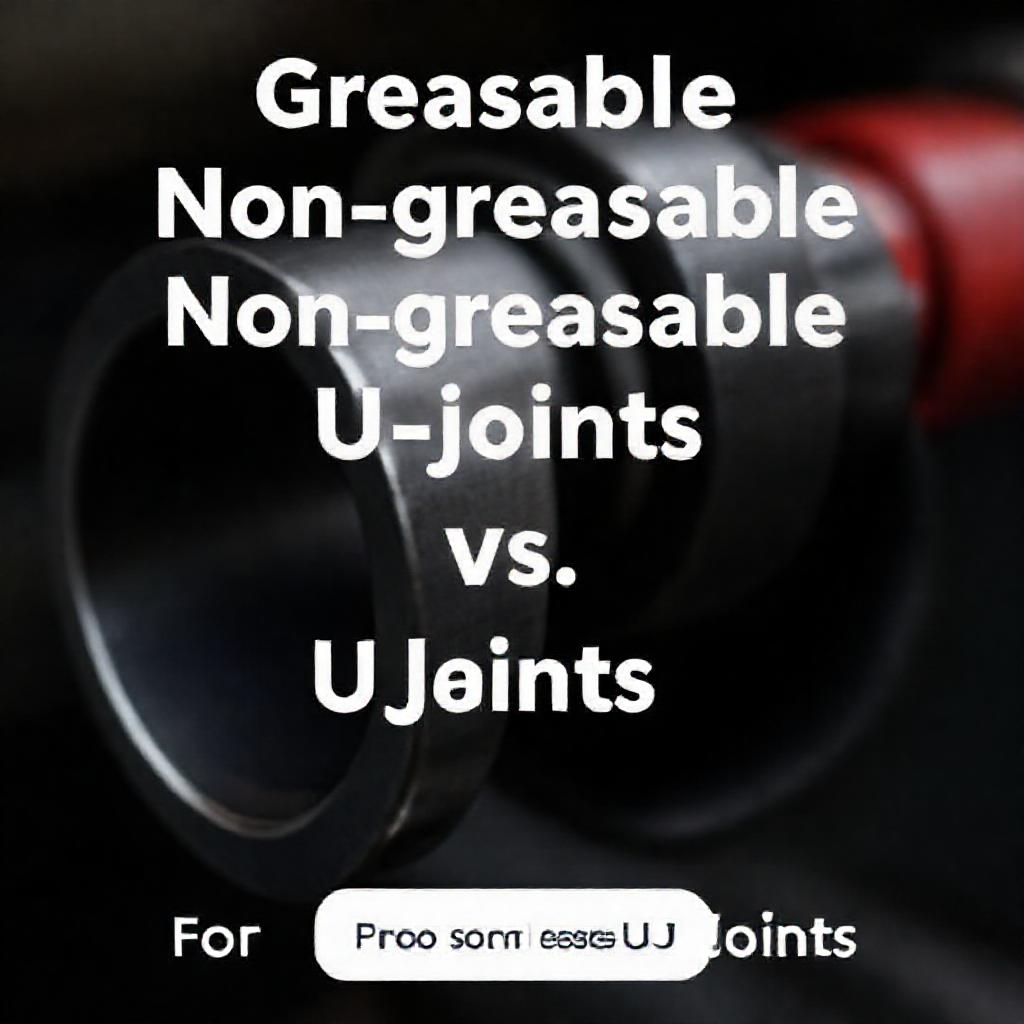
Conclusion
Choosing between greasable and non-greasable U-joints depends on your vehicle’s usage, maintenance preferences, and budget. Greasable joints offer flexibility and cost savings with proper care, while non-greasable models provide convenience and durability. By understanding the pros and cons of each, you can make an informed decision that ensures optimal performance and longevity for your vehicle’s drivetrain.
FAQ Section
1. What is the main difference between greasable and non-greasable U-joints?
Greasable U-joints have grease fittings that allow for manual lubrication, while non-greasable models are sealed and pre-lubricated, eliminating the need for maintenance.
2. How often should I grease a greasable U-joint?
Grease your U-joints every 3,000–5,000 miles, or as recommended by the manufacturer. Off-road or heavy-duty use may require more frequent lubrication.
3. Can I convert a non-greasable U-joint to a greasable one?
No, converting a non-greasable joint to a greasable one is not recommended due to design differences. It’s best to stick with the type specified for your vehicle.
4. Which type of U-joint lasts longer?
Lifespan depends on maintenance, usage, and quality. A well-maintained greasable joint can last as long as a non-greasable one, but only if lubrication is done correctly.
5. Are non-greasable U-joints better for off-road vehicles?
Non-greasable joints offer convenience, but greasable joints may be better for off-road use due to their ability to withstand harsh conditions with proper maintenance.

